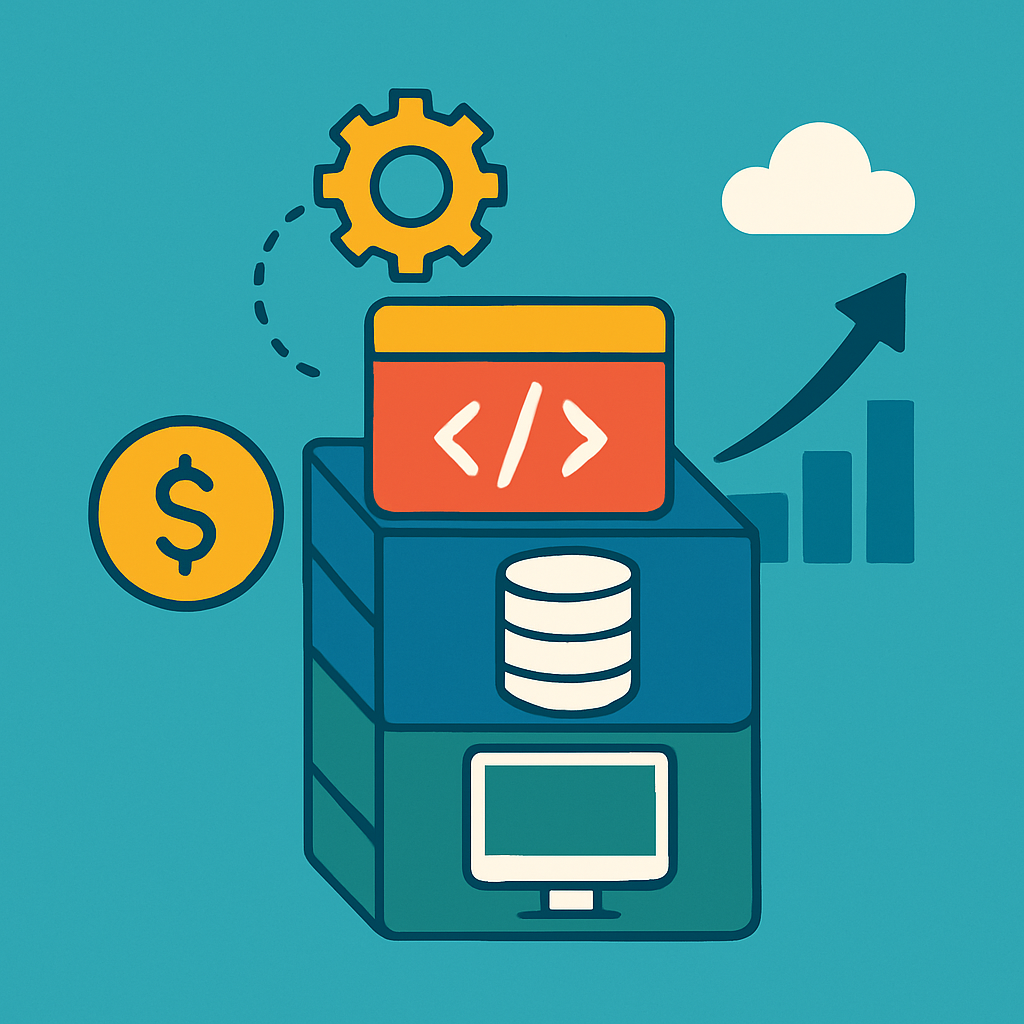As you are creating a digital product—whether a website, mobile app, or enterprise software—the technologies and tools you select are not just technical choices. They determine how fast you can build it, how expensive it will be, and how scalable your product will be in the long run. This set of tools is referred to as your tech stack.
Understanding the Tech Stack
A tech stack at its simplest is a set of technologies that are used to construct and operate a software application. It normally comprises:
Frontend: The application part that the user interacts with. This comprises all the things the user sees on the screen—buttons, text, images, and navigation.
Backend: The server-side component of the application. It processes data, stores data, and the logic behind the frontend.
Database: Where data is stored and maintained.
DevOps Tools: Tools that assist in deploying, monitoring, and maintaining the app.
Selecting the optimum tech stack is not simply a matter of choosing the new or trendy tools. It’s choosing the mix that most suits your project requirements, your team’s skill set, and your business objectives.
How the Tech Stack Affects Costs
The technologies you select can have a major impact on the budget for your project. This is how:
Licensing Fees: A few technologies have licensing fees. For example, proprietary software may incur costly licenses, while open-sourced alternatives may be free but require increased customization.
Development Time: Certain tech stacks enable quick development, shortening time to market. Others may be more complicated, taking longer to implement.
Maintenance Costs: Technologies with active communities and frequent updates can lower long-term maintenance costs. On the other hand, the use of out-of-date or niche technologies may result in more costs as a result of no support.
Hosting and Infrastructure: Backend technology choices may impact the costs of hosting. For instance, some databases may need more potent servers, which would raise hosting costs.
Your application performance and development speed are intimately linked with your tech stack:
Development Speed: Certain tech stacks have built-in components and frameworks that accelerate development. For instance, employing a full-stack JavaScript solution like MEAN (MongoDB, Express, Angular, Node.js) can simplify the development cycle.
Performance: The choice of backend technologies can impact how quickly your application performs. For instance, some databases are optimized for read-heavy operations, while others are better suited for write-heavy tasks.
Time to Market: A well-chosen tech stack can reduce the time it takes to launch your product, giving you a competitive edge.
How the Tech Stack Influences Scalability
As your user base grows, your application must be able to support greater load. The right tech stack can make this simpler:
Vertical Scalability: Certain technologies enable you to add more resources (such as CPU or RAM) to one server to support greater load.
Horizontal Scalability: Other technologies are built to spread the load across multiple servers, allowing you to scale out more easily when needed.
Modularity: A tech stack that has modularity can enable you to introduce new features without interfering with existing ones.
Cloud Integration: Integration with cloud services can enable on-demand scalability, enabling you to tune resources according to traffic.
Right Technology Stack
Choosing the right technology stack is choosing with consideration of various factors:
Project Requirements: Know the particular requirements of your project. For example, if you’re developing a real-time application, WebSockets-enabled technologies may be required.
Team Expertise: Select technologies that your team already knows to minimize training time and maximize productivity.
Budget: Look at both upfront and long-term expenses related to the tech stack.
Community Support: Active community technologies can offer useful resources and support.
Future Growth: Select a tech stack that can scale to support future growth and changes in needs.
Conclusion
Your tech stack is not just a list of tools—it’s the base on which your digital product is constructed. The right one can bring increased speed to development, reduced costs, and a product poised to scale with your business. Take the time to thoroughly research your choices, considering your project’s specific requirements and long-term objectives.




